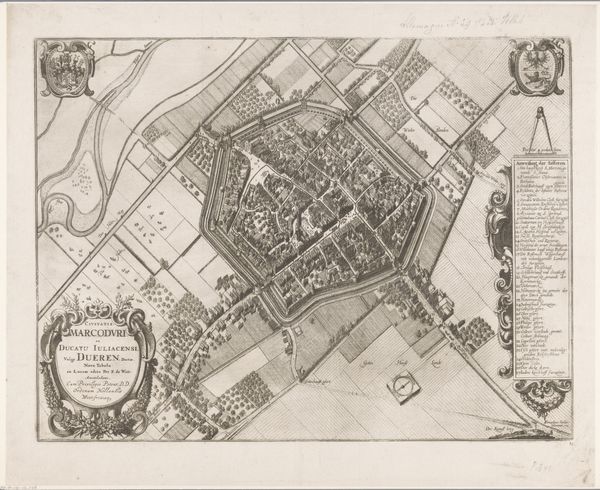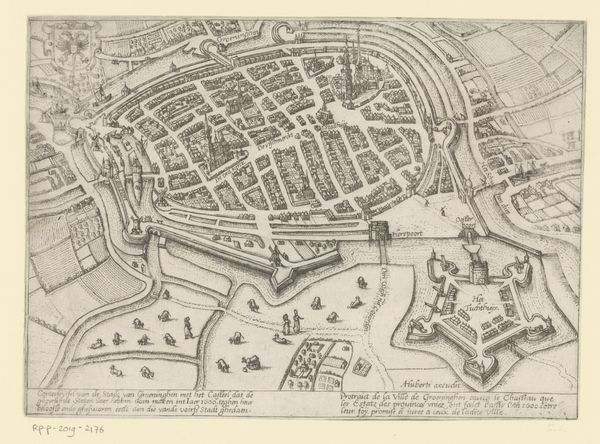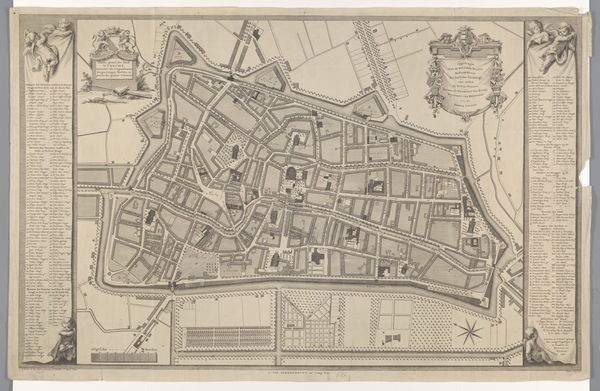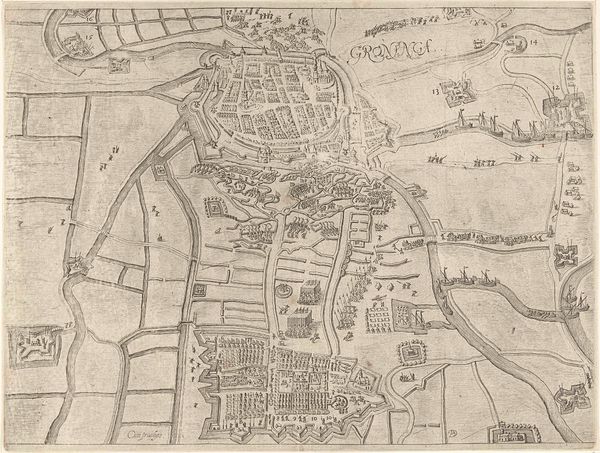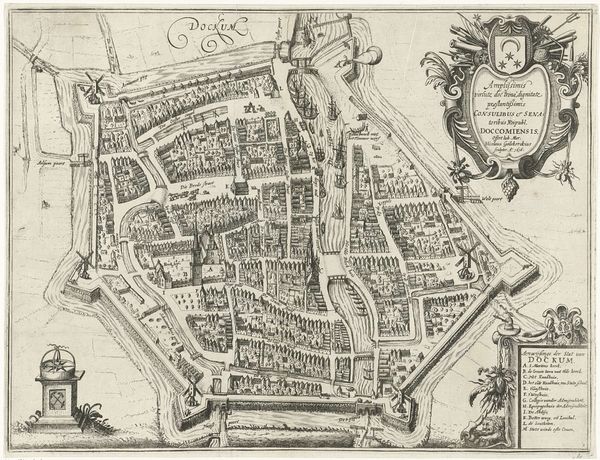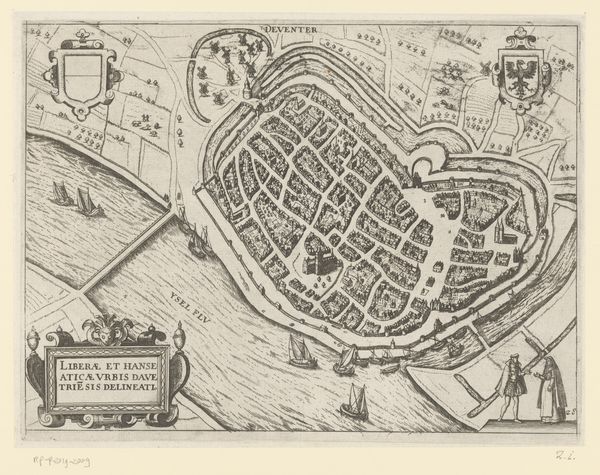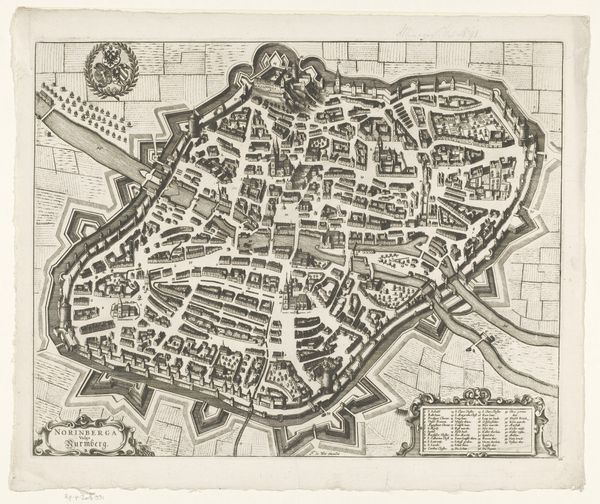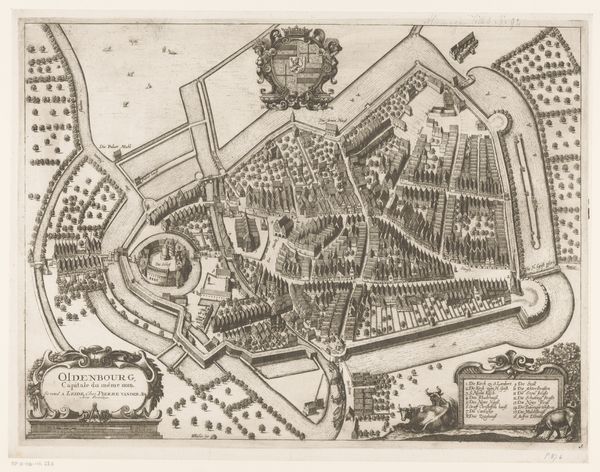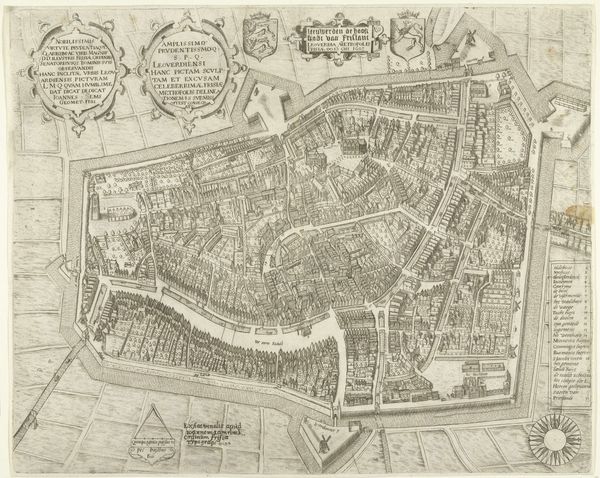
print, engraving
#
baroque
# print
#
old engraving style
#
perspective
#
cityscape
#
engraving
Dimensions: height 372 mm, width 508 mm
Copyright: Rijks Museum: Open Domain
Editor: This print, "Plattegrond van Minden," was created in 1657 by Wenceslaus Hollar. It’s a remarkably detailed engraving of a city. I'm struck by how meticulously everything is rendered. How would you interpret a piece like this? Curator: From a historical perspective, prints like these served multiple purposes. Beyond simple geographical representation, they often functioned as statements of power, projecting the city's wealth, order, and defensibility. Consider the date; 1657. What larger political context might influence the way this cityscape is presented? Editor: Well, Europe was still recovering from the Thirty Years' War, so security and stability would be key. Is that why the fortifications are so prominent? Curator: Exactly. The emphasis on ramparts, moats, and strategic placement highlights the city's readiness to defend itself, reassuring both residents and potential investors. Also note how this image circulates. Who gets to own a print like this, and what does it tell them? Editor: I hadn’t considered ownership. I guess it would be the wealthy elite, who could afford to buy the print. Having such an image demonstrates their knowledge of the city and probably provides a sense of control. Curator: Precisely! Prints like these were not just decorative; they were instruments of power, influencing perceptions and reinforcing social hierarchies. It also shows the rise of cities in shaping the modern state. Editor: That's fascinating. I had never thought about cityscapes having such political weight. It is so much more than just pretty. Thank you! Curator: And thank you for reminding us that even seemingly objective representations are laden with cultural and historical significance. There's always more than meets the eye!
Comments
No comments
Be the first to comment and join the conversation on the ultimate creative platform.
